In recent weeks I have discovered the Swiss brand SNGLRTY and I must admit that I was quite intrigued. On the one hand by the name of the brand and on the other hand by the concept.
Stephen Mansfield, Co-Founder of the brand, shared the story and lots of other info with us during an interview.
I therefore invite you to discover SNGLRTY right here.
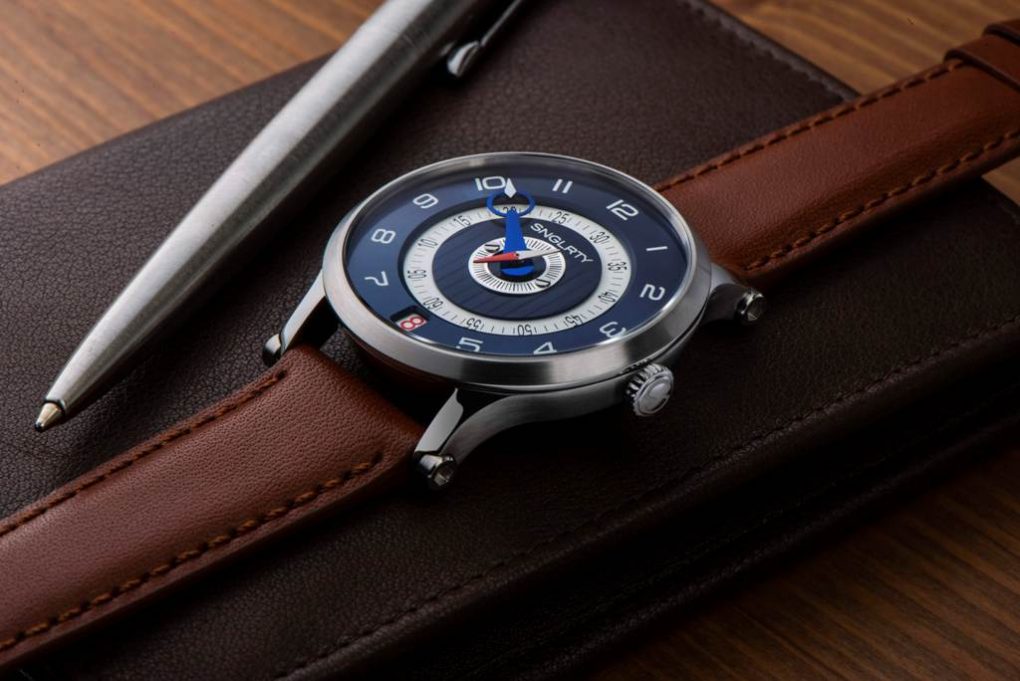
Could you tell us a bit about you and about your story with watches?
I arrived late to the world of watches. Daniel, my fellow co-founder of SNGLRTY, was the key person who drew me into this incredible world. It started in 2013 and I had recently moved Hong Kong and met Daniel. I was working to try to revitalize a watch brand that had hit some problems through the global financial crisis.
Daniel was helping me with some technical advice and sourcing watch accessories. At this point we were not selling watches, the brand was focused on selling only watch accessories but we would discuss regularly how to create a watch for the brand.
As a newcomer to the world of watches I had to come up the learning curve quite quickly. Up to that point I had been a pretty simple watch person. I had my trusty Rolex! It was during that process, looking at all the watches that were available and being launched in the market that my watch knowledge really ramped up and my appreciation for watches really grew.
My appreciation for watches is probably a little bit different from most. I do enjoy the design of a watch, but I really get my enjoyment from the engineering. I studied materials engineering at university so when I look at a watch and the watch movement I really enjoy the engineering behind each component. I find that great functional design has its own beauty, over and above visual lines of the watch. The challenge is that in order to appreciate the technology at that level you need to understand it from first principals which is not always possible for everyone. Daniel and I are doing our best to open that understanding to more people through our blog at blog.snglrty.watch

When did the idea to create a new brand came to you? When did you start working on the creation and on the launch of it?
Daniel and I did not set out to create a new watch brand at all. This has very much been an evolutionary journey. As I mentioned before, this all started with my attempts to revitalize a watch brand and a discussion about creating a watch for that brand. That conversation between Daniel and I continued to evolve over time.
I realized that you cannot have a watch brand without a watch. Daniel and I would discuss this regularly and he was willing to make the design. The problem I continually came back to was that all we were doing was changing the colours, or the shape, or the materials. I felt it was not enough. I wanted to do something that was new, different.
That was the challenge at the time and Daniel and I went through a long phase where we thought we had something only to find it had already been done.
It was not until we had our epiphany moment in a bar in Hong Kong over a few bottles of red wine that we had any inkling that we were going to make watches, never mind create a completely new watch brand.
That was back in 2015 and we have been working on the watch and the brand ever since. For the initial period of the development we just referred to it as the OHI project, which was short for “One Hand Indication”. This moniker has been kept as the indication for the model numbers of the watches.
We launched the watches with a crowdfunding campaign in 2018, delivered all our watches by early 2019. Most of 2019 was spent creating our presence in Switzerland and perfecting our supply chain and we are really starting to take our message to the world from earlier this year.
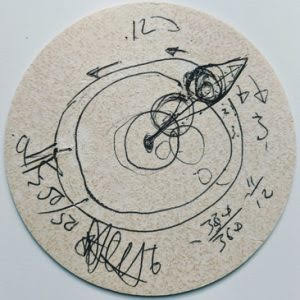
What made you want to enter in the already overcrowded watch market?
As I mentioned before this has been an evolutionary process, the intention was to make a watch for a brand that already existed. When we received our patent for SNGLRTY and then realized the advantage of our design we decided to focus only on this watch and I sold the rest of the business. Having something so unique gave us the confidence to launch it into the market.
The fact that this is a crowded market is not something that worries me particularly. It has driven us to challenge every aspect of what we do to ensure that we are delivering the most value possible to all our customers and extract the most from our innovation. One good example of this is that we work with each customer to configure each watch to the customer’s taste. We currently have over 10,000 permutations available.
We decided quite early on that instead of Daniel and I choosing which watch to make and hoping people liked them we would work with each customer to select the combination for their watch face and then have it assembled exclusively for that customer.
Looking at the situation from a different angle, if there had not been the competition perhaps we would have made something pretty standard and we would not be challenging ourselves to “create something different” and we would not be providing a unique experience to each of our customers.
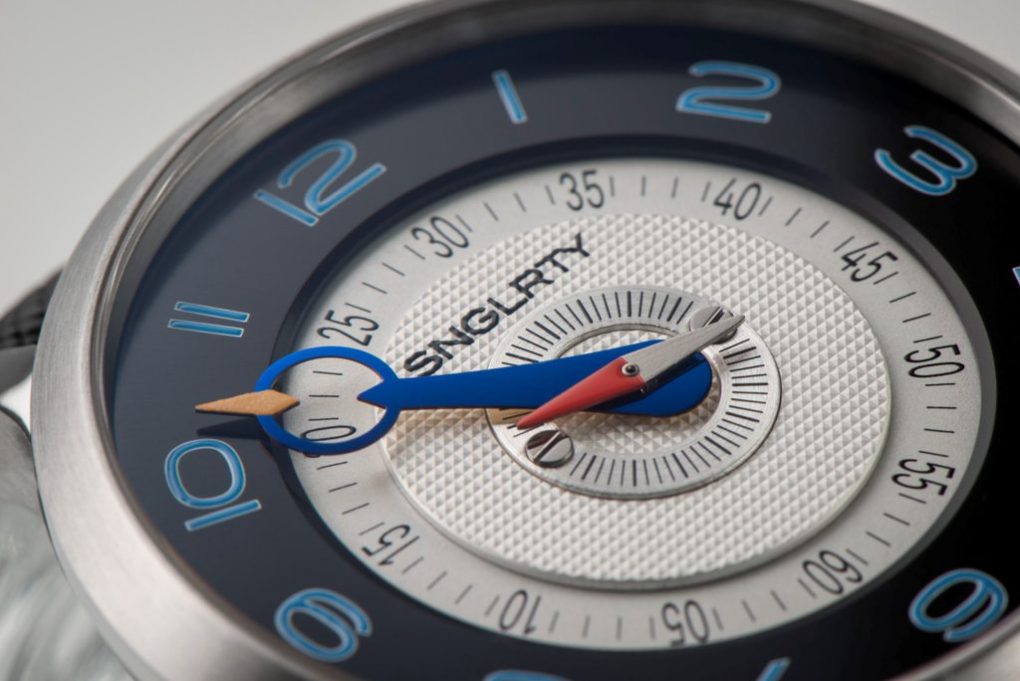
We need to know now, from where comes the name of your brand. It’s like impossible to pronounce it so I’m a bit skeptical
Yes! Well Daniel had the same reaction when I first suggested it too. It all came from how we present time; we see that we have distilled it to a single point, the ultimate simplicity. We had been toying with naming it Singularity, and in fact you will see this branding on the back of our “Zero” series prototypes.
The problem here was that it is a very difficult word to trademark so we had to come up with something else. I had read somewhere that native English speakers read without actually visualizing the vowels, so just as we distilled time to a single point on a watch face, we distilled “singularity” to “SNGLRTY” by dropping all the vowels.
So you pronounce “SNGLRTY” as “singularity”

What’s the most important thing in the process of creating your timepieces?
For us the most important part is working with each customer to ensure they get the watch that they desire. The vast majority of people buy a watch in a shop and generally select from an array of watches that are available.
We have turned that on its head a bit and we create a watch for each customer. Daniel or I will have a call with the customer and take them through the available palette for the 5 components that make up the watch face and then select the index colour. There are additional configurations, for example whether the customer would like Swiss Superluminova® applied to their index.
Once the customer is happy with their choices (and that can take a while), we then have the watch assembled and tested. On confirmation of the selection and assuming that all the components are immediately available we usually deliver the watch within 4 weeks. We do get a lot of requests for additional customizations which we are happy to accommodate, but that does extend the delivery time.
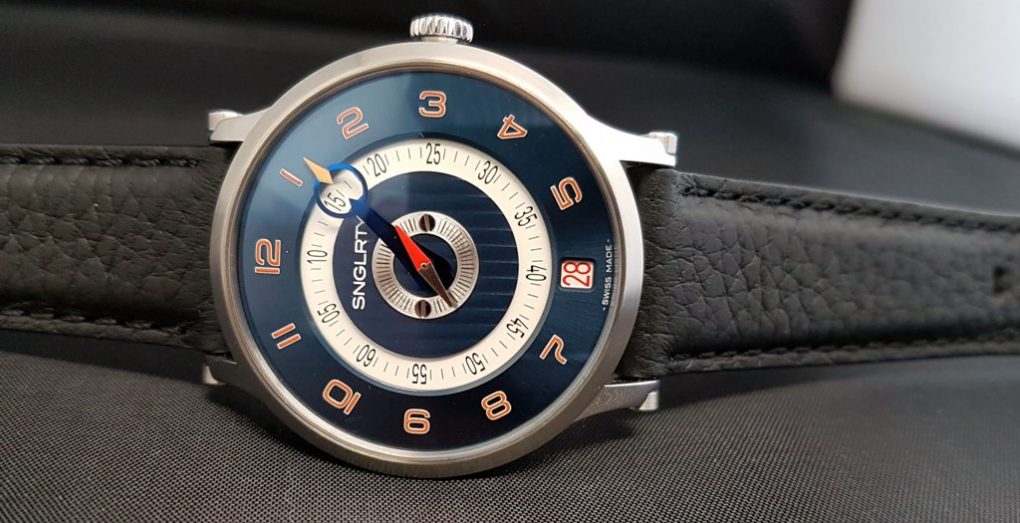
What steps do you go through to develop and produce them?
That was a long process. The real focus of the early phase was on creating the movement. As we had a completely new presentation of time we were not able to just purchase a movement off the shelf. Daniel rolled up his sleeves and worked with the engineers to develop a module that would slow the minute driver, reverse it and then elevate the date driver from the top of the original movement to the top of the module.
The engineers did a remarkable job because they designed our module so that it does not merely sit on top of the base movement. The top of the movement is removed and some parts are dis-assembled and then our module is integrated into the movement. The result of this is that the module increases the height of the final movement by less than 1.5mm when compared to the base movement.
Once this was completed we were focused on the exterior design. This was really where Daniel took control of the process and together with a former colleague of his they refined the design over time. There was another really pivotal moment when we realized that we would have to redesign how the watch face is built and attached to the movement because of the way we display time.
As for the production this is where Daniel’s 30 years of experience in the watch industry really came to the fore. He was able to contact all the correct people to get each component made. In many cases he was going back to suppliers that he has used many, many times over the years. I was blissfully unaware of all the trials and tribulations he went through for much of the time, but I never doubted we would end up with a magnificent result.

From where comes your inspiration concerning the design of your pieces?
We were pretty clear from the beginning that with our unique presentation of time we did not want an extravagant design so we went for a more classic appearance. Daniel worked with one of his former colleagues and came up with a design that really accentuates the watch face and our display of time.
With closer inspection you can see that traditional watchmaking elements were twisted, mixed or exaggerated while conserving the classic simplicity.
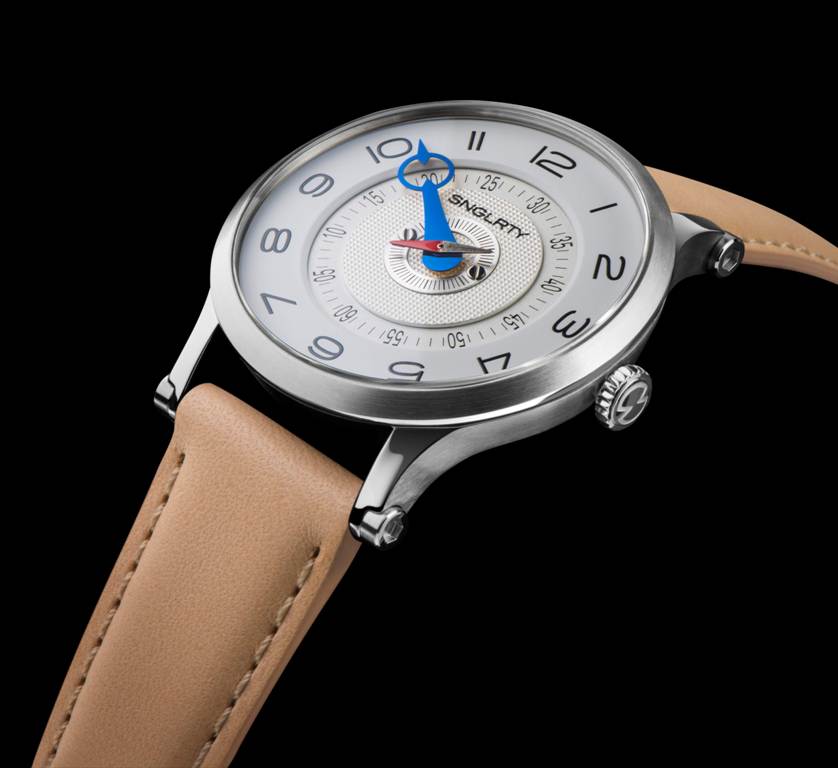
Do you have an anecdote about the design and creation phase of your timepieces?
My favorite anecdote from the whole process was when Daniel phoned me up to tell me that we needed to redesign how the watch face is made and attached to the watch. This is particularly memorable for me as I remember exactly where I was (walking up some steps in Hong Kong) and I remember my immediate reaction (oh no, another hurdle!).
As I recall at the time we had just overcome a load of issues from the patent application to the module engineering and some manufacturing issues and I was thinking we were home clear … and then Daniel calls me up with this bombshell.
The call started off with Daniel telling me we had to reengineer the watch face and create it out of many more parts rather than the traditional one piece. My heart sank, this sounded like a disaster to me, more pieces, more expense, more trouble! One thing was different though, Daniel was seemingly very excited and enthusiastic about this.That is quite unusual for a Swiss gentleman, so I thought I would listen a little more carefully.
He took me through the reasons for this and how it opened up a whole new area of creativity that we can share with our customers. If the first pivotal moment for this project was our creation of the new time display then this was the second where we can bring a huge degree of personalization to our customers at an incredibly affordable price.
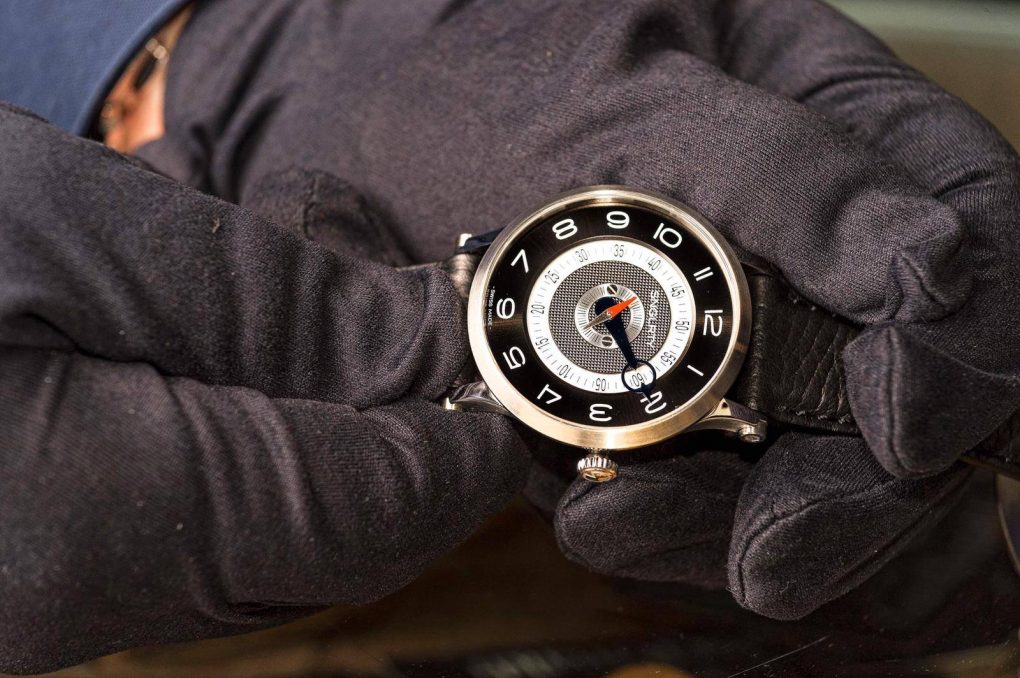
From your perception, what makes your watches so special?
I think there are two key aspects that make our watches very special. The first is that we display the time in such a unique manner. We understand that perhaps mechanical watches are not widely used for actually telling the time these days, but we are under more time pressure than ever before and our schedules seem more packed. Our aim is that our customers not only see time differently on the watch face, but each time they look at their watch, and especially if it is a SNGLRTY watch, it will give them a little pause to consider if they are spending their time in the best way for themselves. After all, time is what our lives are made of.
I think the second aspect to make our watches special is how we work with our customers to really create a watch that reflects the customer. We hope that providing our customers with all the options affords them the opportunity to create a watch that reflects a little bit of who they are. I am constantly amazed at the variation we are able to create but more so how different each individual’s choices are –that is also a source of satisfaction for us, to be able to create a really personal watch for each customer.

Could you tell us more about the design process you go through with your clients and how it really works when they order a piece from you? Also what’s average price?
The process is very simple. Either Daniel or I will arrange a time for a video call (or a personal meeting if that is possible) with the customer. During this meeting we will walk that customer through all the details of the watches, the choices they have open to them and the impact those choices will have on the finished watch. We usually have a number of watches at hand to demonstrate some of these choices on finished watches too.
After that meeting, hopefully the customer has a good idea of what they would like but would perhaps like to think about it. At the customers discretion they can think about it, make a few changes but once the final decision has been made we will confirm the drawing on a final call. Once confirmed the componentsare sent for assembly. From the date of confirmation to delivery should be no more than 4 weeks provided the configuration is from colors we have in stock.
This process can take as long or as short as the customer wishes.We want every watch to reflect their owner so sometimes this takes a little bit of time. Although on the other end of the spectrum we have had one customer send us a photo of one of our watches with an instruction “change the lume to orange and send me the bill.”
So in short there is no specific process, we want our customers to enjoy it so we try to tailor it to each customer.
Our watches start at EUR1,980 (including VAT) but most people end up making some additional customizations so the average price is in the EUR3,000 range.

Social networks are really important for micro brands like SNGLRTY. Could you let us know how and why do you use them? and what’s your strategy to stand out from other brands in your price range ?
Yes, they are extremely important to us. I am not sure if the huge boom in micro brands would be possible without the social media platforms. The real value for us is that we can find our target audience easily through many watch enthusiast groups and are able to start a conversation that way. The key is that there is no barrier to entry for this.
Obviously you can do advertising too, which is advantageous, but again here there are great advantages as you can advertise in very small increments. If we contrast with the classic model you would put an advertisement in a trade magazine or something like that and that would be a huge expense and probably 80% of that audience has no interest in micro brands – they want to hear about Rolex, AudmarsPiguetetc so it is not as effective. The social networks allow a very focused strategy.
In regard to our strategy, it is simply to be authentic. This started with two friends trying to solve a problem and it has grown from there into a very unique watch which we hope will be as personal for each of our customers as it is for Daniel and I. Some of our social media posts may be a bit lacking in finesse but you cannot say that about our watches. We understand that our watches are not for everyone, but for those who appreciate what we are doing our hope is that they will join us on our journey to #seetimedifferently.

Let’s talk about distribution. Obviously, you use the direct sales strategy which is better for a young brand like yours. Could you tell us how people can buy your watches? In the future you want to develop a new distribution strategy?
All you need to do to buy one of our watches is contact us and tell us you would like to buy one. You can just send us a message from Facebook, Instagram, LinkedIn, Twitter or from our website at snglrtywatch.com or our blog at blog.snglrty.watch
We do have a few collaborations to sell our watches, for example in Taiwan we work with Link & Tag but these are not typical bricks and mortar establishments. These are watch groups that really understand SNGLRTY and enhance the experience of curating your own watch.
If we attempted classic wholesale / retail model there would be a need for lots of stock and so there would be no room for the customer to enjoy the experience of creating their own watch. I think we would lose our authenticity if we pursued that strategy. That is not to say we will not do it, but we really have to think carefully about how we do it. We do not want to compromise ourselves to fit someone else’s model.
Thankfully because of social media we pursue our own path and still have a successful business.
As you are not in the mass market, how many watches do you already have delivered?
I don’t know exactly but is it somewhere between 100 and 200.

Now and more generally, what are your plans for the future?
Our immediate plans all focus around getting our message out to the world and also hopefully increasing people’s understanding of the finer points of watches.
We have some exciting collaborations coming up, one in particular is with Albert Zeller of ova, we had a wonderful time chatting about Swiss Superluminova with him and we have made a series of short videos packed with great information for everyone who is interested in luminova. It was really great doing this as both Daniel and I learnt so much we felt we had to share it with a wider audience. We have a few of them up on our blog at blog.snglrty.watch but we are also planning a webinar on luminova where we go in for a deep, deep dive on this and then a few specials after that. If people are interested they should definitely sign up on our n
ewsletter.

What aspects of your brand do you think people should know more about?
The key aspects that people take a little time to really understand are that SNGLRTY really does present time in a novel way and the individual configuration that we offer. I think for some it appears too good to be true.
If we look at each of these individually, our display of time is unique we even have a patent for it. This, by default means that we have a unique movement where the minutes travel in reverse and are slowed down. The mechanical complication to achieve this was quite a challenge but I am proud of this accomplishment.
The second is that with the recreation of the presentation of time the whole watch face had to be re-engineered that opened up an unparalleled opportunity for our customers to create their own watch. I am not aware of any other watch out there that can provide such an offer to their customers at such an affordable price.

OK, now something more personal. For you, what’s the most important thing to find in a watch?
That is an interesting question for me as it has changed a lot over the last few years as I have acquired more understanding of watches. The first key criterion is how the time is displayed. That sounds a little trite given the focus SNGLRTY brings to this aspect of a watch, but it is the first thing I look at on a watch. Where the watch face is beautifully curated really catch my eye, they will get a second look from me. After that it is all down to the engineering.
It is where the emotion of time and the technical engineering are in sync that I find the beauty in watches.

OK, now something more personal. For you, what’s the most important thing to find in a watch?
That is an interesting question for me as it has changed a lot over the last few years as I have acquired more understanding of watches. The first key criterion is how the time is displayed. That sounds a little trite given the focus SNGLRTY brings to this aspect of a watch, but it is the first thing I look at on a watch. Where the watch face is beautifully curated really catch my eye, they will get a second look from me. After that it is all down to the engineering.
It is where the emotion of time and the technical engineering are in sync that I find the beauty in watches.
You can follow SNGLRTY Watches on the social networks :
Facebook / Instagram
Jonathan Kopp

Thank you very much for your support Jonathan.
[…] This is a wide-ranging discussion about the core of SNGLRTY and what we are hoping to achieve with our new development in watch technology. I hope you enjoy reading it HERE […]